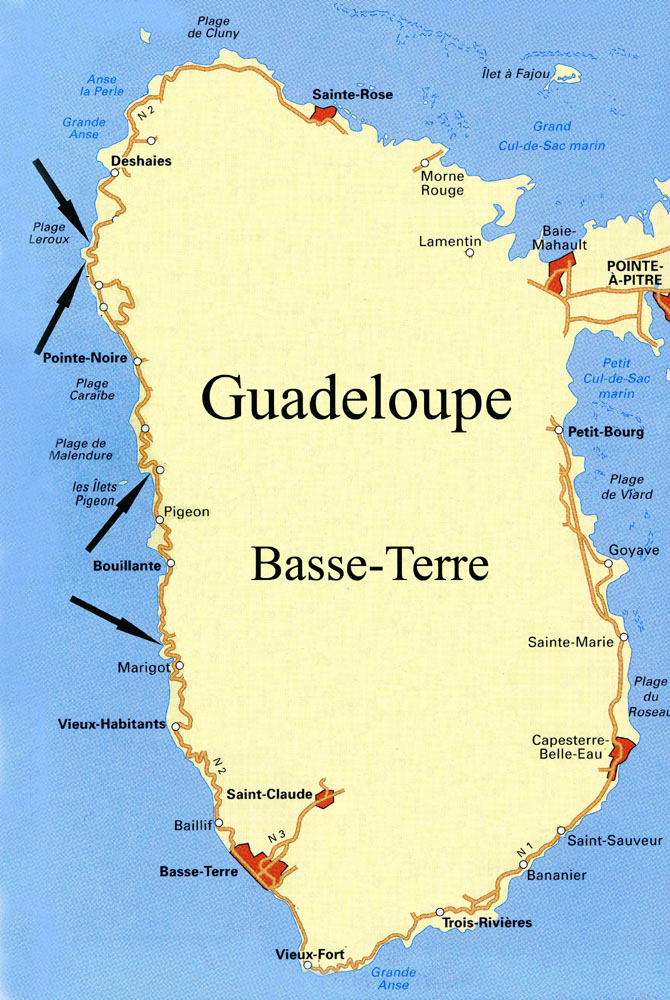Twenty nine genera are represented by only one species.
Two observations characterize the four samples A,B,D and C :
-
One different species was dominant in each sample: sample
A, Lyrella clavata; sample B, Amphora
coffeaeformis; sample D, Amphora elegans and sample C, Diploneis vacillans.
-
Most of the other species were small species. In addition,
the size of the frustules was frequently near the inferior limit
indicated by the diagnoses .
In the four other samples, most of the species were also of small or medium size and, at least for the genus Cocconeis, the frustules had measurements near or below the inferior limit given by the diagnoses.
The species
Pictures of some of the collected species are presented in :
Several taxa non- identified taxa are
presented in :
The 3 monoraphid
genera Achnanthes,
Cocconeis andPlanothidium
were represented respectively by 11, 49 and 4 taxa. Most of these taxa were present in low number.
Sixty one biraphid
genera were represented by 404 taxa.
The genus Amphora was
dominant by the number of taxa, most of which being present in low
number.
The genus Mastogloia
An
inventory of the taxa belonging to the genus Mastogloia, present
along the coast of Basse-Terre, was published in 2013 (Loir & Novarino 2013; figures).
The preparations used for this inventory were of
unsatisfactory quality. A new very thorough examination of the samples
obtained in 2006 and 2007, realized in 2014, highlighted the presence of numerous Mastogloia taxa not observed previously (see list). Their total number of 57 differs
little from those observed in Marie Galante (68) and in Martinique (60).
In Loir & Novarino 2013 (plate 23), 3 among the 5 figures of Mastogloia subaffirmata correspond in fact to Mastogloia cyclops ( présence of a single large stigma on one side of the central area).
Three not identified species, absent in Marie-Galante and in Martiniqua, are present
in Basse-Terre. They were named M. sp. 19, M. sp. 20 and M. sp.c. The
latter was found in the Mediterranean Sea (Corfou)
In 2006, 37 taxa among the 57 ones, were not observed.
Some taxa are illustrated :
Conclusions
The data obtained with the eight samples collected in
the first meters of the sublittoral zone of Basse-Terre point out
that the diatom communities, present during january and march on the sandy
sediments along the western coast of this island, are
characterized by a high generic and
specific diversity and by the dominance
and the specific diversity of the genus Amphora.
However, in spite of this diversity, four samples contained populations
which were, if not monospecific, at least dominated by one
species.
The
analysis of the populations collected, on one hand in january and on the
other in march (at one year interval), shows
differences in the collected species. Seventy per cent of the species
listed in march 2007 were not found in january 2006. We
suggest that, although these differences could be due to the low number
of samples, they could reflect also variations throughout the year (seasonal variations ?).
Taking into account the species collected, it appears that the diatom
communities that we have obtained at Basse-Terre (in
january and march) and at Martinique (in march-april) differ noticeably from those that we have obtained at Marie-Galante (in march and may). If the period of collect can explain partly the difference, the mineralogical nature of the sediments (coral
origin at Marie-Galante and abrasion of volcanic stones at
Basse-Terre and Martinique) could play an important role in the composition of the two
diatom communities.
The dominant genera in Lesser Antilles :
| |
Marie-Galante |
Guadeloupe |
Martinique |
| Genera |
62 |
98 |
87 |
| Taxa ** |
295 |
540 |
560 |
| Mastogloia |
68 (23 %) |
57 (10.6 %) |
60 (11 %) |
| Nitzschia |
31 (10.4 %) |
71 (13.1 %) |
62 (10.5 %) |
| Amphora |
27 (9.2 %) |
78 (14.5 %) |
79 (13.4 %) |
| Cocconeis |
25 (8.4 %) |
49 (9.1 %) |
34 (5.8 %) |
| Navicula |
14 (4.7 %) |
39 (7.2 %) |
51 (8.7 %) |
| Diploneis |
13 (4.4 %) |
25 (4.6 %) |
28 (4.8 %) |

